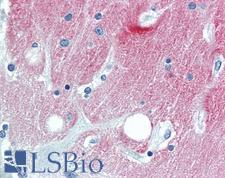Login
Registration enables users to use special features of this website, such as past
order histories, retained contact details for faster checkout, review submissions, and special promotions.
order histories, retained contact details for faster checkout, review submissions, and special promotions.
Forgot password?
Registration enables users to use special features of this website, such as past
order histories, retained contact details for faster checkout, review submissions, and special promotions.
order histories, retained contact details for faster checkout, review submissions, and special promotions.
Quick Order
Products
Antibodies
ELISA and Assay Kits
Research Areas
Infectious Disease
Resources
Purchasing
Reference Material
Contact Us
Location
Corporate Headquarters
Vector Laboratories, Inc.
6737 Mowry Ave
Newark, CA 94560
United States
Telephone Numbers
Customer Service: (800) 227-6666 / (650) 697-3600
Contact Us
Additional Contact Details
Login
Registration enables users to use special features of this website, such as past
order histories, retained contact details for faster checkout, review submissions, and special promotions.
order histories, retained contact details for faster checkout, review submissions, and special promotions.
Forgot password?
Registration enables users to use special features of this website, such as past
order histories, retained contact details for faster checkout, review submissions, and special promotions.
order histories, retained contact details for faster checkout, review submissions, and special promotions.
Quick Order
PathPlusTM L1CAM Antibodies
L1CAM (L1, CAML1, CD171) is a trasmembrane protein that functions in brain development, neuronal cell adhesion, neurite outgrowth, myelination, plasticity, differentiation and migration. Mutations in L1CAM lead to L1 syndrome, characterized by a range of brain developmental abnormalities including severe cognitive impairment and corpus callosum aplasia. L1CAM is found on the cell surface of neurons throughout the nervous system, oligodendrocytes, Schwann cells, intestinal epithelial progenitor cells, and Purkinje cells. In cancer, it is also expressed on melanoma and lung carcinoma cells, among others. In immunohistochemistry, in addition to positivity throughout the central and peripheral nervous systems, L1CAM is also found in distal renal tubules and at lower levels in the adrenal gland, kidney, soft tissue and reproductive tissues.
References: Progress in Histochemistry and Cytochemistry. 2016. 51 (2): 25–32, PMID: 27267927; Nature. 334 (6184): 701–3, PMID: 3412448; Human Molecular Genetics. 6 (10): 1625–32, PMID: 9300653; Sci Rep. 2019 Mar 6;9(1):3716, PMID: 30842511;
1 PathPlusTM Antibody

☰ Filters
Products
Antibodies
(1)
Type
Primary
(1)
Target
L1CAM
(1)
Reactivity
Human
(1)
Application
IHC
(1)
IHC-P
(1)
Host
mouse
(1)
Product Group
PathPlus Neuro
(1)
Isotype
IgG1
(1)
Clonality
monoclonal mc
(1)
Clone
UJ127.11
(1)
Format
Unconjugated
(1)
Publications
No
(1)

Neuroscience
L1CAM Mouse anti-Human Monoclonal (UJ127.11) Antibody
Human
IHC, IHC-P
Unconjugated
0.1 mg/$375
Viewing 1-1
of 1
product results










